Another Timbre TimHarrisonbre
at147 Adrián Demoč - Žiadba
1 - 2 Kvarteto (2015/17) 10:37 youtube extract
Apartment House: Anton Lukoszevieze (cello) Mira Benjamin (violin) Heather Roche (clarinet)
Philip Thomas (piano)
3 A Luca Marenzio (2018) 14:25
Apartment House: Anton Lukoszevieze (cello) Chloe Abbott (trumpet) Philip Thomas (piano)
4 Septett (2011/15) 9:34
for 2 violins, 2 violas, 2 cellos & double bass Ostravska Band / fama Q
5 Modré Kvety (2018) 15:33 youtube extract
Apartment House: Anton Lukoszevieze (cello) Heather Roche (clarinet) Philip Thomas (piano)
6-7 Žiadba (2015/18) 13:12
Mira Benjamin (violin)
Interview with Adrián Demoč
Could you tell us about your background, and how you came to experimental / contemporary music?
I started having piano lessons at the age of 6. Although I didn’t really appreciate the drill, I enjoyed sitting at the piano and wrote some first “pieces”. Aside from that, from a very early age I was an “other music” freak. Early fascinations included (black) metal from the 90’s, Slovak folklore and jazz. Simply music which was somehow wilder and, to my ears, much freer than the standard classical repertoire which I was playing on the piano.
I started composing at grammar school, mostly “prelude-like” pieces for piano, but I also tried some chamber stuff (combining wine glasses, accordion and cimbalom), and wrote a very short orchestral piece, now lost somewhere. At grammar school there was a nice art teacher who supported my eagerness for otherness in music, art and literature. She gave me as a gift a huge collection of old LPs from the school (which nobody was listening to anymore). I used to spend whole days and weekends listening to them. I remember discovering Stravinsky and some Polish composers (Lutosławski and Górecki in particular) at that time. That music was decisive for me: I simply couldn´t believe that “classical music” made on acoustic instruments could bear such emotional strength. Another important composer was Messiaen (La Nativité du Seigneur); I simply loved those chords and static moments.
Sometime later I discovered the music of Pärt (Passio) and Feldman (Rothko Chapel). That was another discovery of equal impact and importance: that you could also “speak” quietly and calmly, without sharp contrasts within the form, that you could create wonderful “music” with silence and “just a few pitches”. Or, in other words, I discovered that music could also breathe.
Regarding my academic training, after grammar school I studied composition at the Janáček Academy in Brno, Czech Republic, and also spent some time studying in Bucharest and Vilnius, which was certainly an enriching experience. I finished my academic studies in 2011. After several years I visited an institute for composers in Ostrava, Czech Republic (in 2015 and 2017) to have some intensive exchange.
I feel I was fortunate to meet and study with several wonderful composers, who surely had an influence on me (Martin Smolka, Osvaldas Balakauskas, Doina Rotaru or František Emmert). And of course, I continue(d) to discover a lot of other composers and music which I found inspiring, for example: Tomasz Sikorski, Bronius Kutavičius, Paweł Szymański, Rytis Mažulis, Gérard Grisey, ars subtilior, to name just a few.
Can you describe the contemporary music scene in Slovakia - how easy is it to survive as a contemporary composer in Eastern Europe?
I haven’t studied, nor lived my adult life, in Slovakia, so I don’t feel that I’m personally involved with its music scene. Musical life there is centred in Bratislava, where I have never lived. I think that I´m more in touch with Slovak poets or dancers than musicians. But there are certainly several interesting composers and musicians. I especially like the music from the 90’s - composers around VENI ensemble, who also did a great job in performing some older Slovak contemporary/experimental music from the 60’s. Another inspiring figure was Milan Adamčiak, whose wonderful work consisting of graphic scores, visual/concrete poetry and happenings was published in its entirety just before his death a couple of years ago.
And for many years I have been working intensively with Slovak violinist/violist Milan Paľa.
But it seems that there are nowadays several ensembles bringing some fresh air into Slovak music culture (Veni Academy, ensemble Ricercata, Cluster ensemble, ensemble Spectrum).
I don´t think it’s possible to survive as a contemporary composer in Slovakia. But I’ve got some good friends from the Czech Republic who are (at least partly) able to make their living as composers. However they mostly receive commissions from – and in many cases live – abroad, mostly in Germany.
So where are you living, and what do you do to make a living at the moment?
I live in a fairly small town in Spain. I usually teach music. I used to work as a piano teacher, but in recent years I’ve also worked as a music teacher at various school centres (pre-school, centre for special education, secondary education).
Can you talk about some of the pieces on the CD, starting with the first piece, Kvarteto, which is very distinctive, and has two movements which are very different in feel? How did the piece develop, and why the extraordinary Canon movement?
After a few years of exploring dense microinterval clusters and rather static, slower processual textures in several compositions, I felt a need to look again at other elements: melody with more “naked intervals” (often “detuned” with the aid of natural harmonics), simpler chords, movement–structured composition, and even simple pulse or clearly defined rhythm and timbre. I simply needed some new air. Kvarteto was composed in 2015, together with its musical “sibling” Žiadba – the solo violin piece that concludes the CD. I don´t usually write two or more pieces at the same time, but in this case I made an exception. I started both pieces from the same material which form the first movement and then developed other strategies. Žiadba was from the beginning conceived as a two-movement composition.
Kvarteto, however, was first a longer four-movement piece, composed originally as a string quartet (which hasn’t been performed yet). After completing the piece I removed one movement which was too complex rhythmically and I didn’t feel it made a sense within the context. Later I re-orchestrated the piece for cimbalom (or piano), clarinet, violin and cello. There were several performances of Kvarteto as a three-movement piece. But finally I decided to remove another movement and keep its form as a “diptych” of two clearly defined movements. About the “canon”: after having the single –voice melody, I was experimenting with it as a material for four voices. I’ve tried many things, even wrote another (string) quartet during that time. But finally I decided to keep the voice and pulse of the basic material almost intact in every voice and use a very dense canon, with the distance of a 16th note. I was also interested in listening to this canon in a more “monochromatic” sound, so I created another version for four alto flutes.
As to the second piece, who was the dedicatee - Luca Marenzio, and how does the piece work?
Luca Marenzio was an Italian composer from the late Renaissance, known for his madrigals, which are often highly chromatic. In the first section of his beautiful piece Solo e pensoso i piú deserti campi he uses a fascinating, almost conceptually patient chromatic rise (and incomplete fall) of one of the voices. As a listener, I just felt a bit sorry that this wonderful hypnotic texture passes by so quickly. My homage was therefore (partially) written as a peaceful “conversation about music” without the limits of time and history. The chromaticity is here replaced by a "scale" made of the natural harmonics of the cello in the range of two octaves. Their "rise" and "fall" form the backbone of the form of the piece. Marenzio's florid counterpoint (which is wonderful, by the way!) has been replaced with a calm and homophonic three-voice texture, although the harmony I use is completely different; I haven’t used any of Marenzio’s chords or progressions. By the way, I first read about Marenzio’s piece in an interview that Chiyoko Szlavnics conducted with Peter Ablinger.
I think Modré Kvety is a particularly beautiful piece. Its gentleness and use of simple melodic elements fit well within the current aesthetic of Another Timbre, but is it typical of your recent music, and how did you come to write a piece like this?
I would say both as a listener and composer I tend to prefer “gentle and soft”, non-violent music, although I’m also always searching for different shades, possibilities and discoveries within this very broad category. But sometimes I also feel a need to break out for a moment and search for liveliness and stronger expression (for example, my piece from 2016 called Struny: steny, zhluky, sny for string orchestra), although I haven’t written anything “wild” recently. But whatever the material, be it gentle or expressive, I think I’m still searching for some kind of clarity and simplicity, but a kind of simplicity or nakedness which still fascinates, which is a tricky and complicated issue.
I think of three of my works from 2018: Modré kvety, A Luca Marenzio and an orchestral piece called Neha as a “Czech trilogy”, as all these pieces were commissioned and premiered there (or Neha will be premiered in November 2019). Although each piece is somehow different, they all deal with simplified harmonic/melodic material, natural harmonics, one-movement monolithic composition and general softness. I also feel that the composition process was somehow similar: maybe more “diary-like”. I felt somehow more relaxed about the music, just listening to the sketches, playing/singing to chords and pitches over and over, without any pre-compositional plan. After any change of any pitch, chord or duration I would start playing/singing/listening from the very beginning.
I’ve recently made a few more chamber pieces where I go on with this approach. But I’m starting to feel the need to explore new paths, strategies, depths. I still don’t really know what it means and where it will lead.
And finally Septett: what’s the story behind that piece, which is a slightly older work than the other compositions on the disc?
In 2011 the German ensemble Streichseptett Heiligenberg organised a portrait concert dedicated to my teacher Martin Smolka. He very kindly suggested to them that I, as his student at that time, should also write a piece for them for that occasion.
At the beginning there was a tempting opportunity to write a piece for a very unusual string septet: descant (a kind of high violin), 2 violins, viola, tenor (or high) cello, cello and double bass with an added low string. It was also inspiring that each instrument was made from the wood of a different tree. The tempting aspect for me at that time was mainly the pairing of "usual" with "unusual" instruments.
In those years I was focused on monochromatic instrumentation and was exploring clusters of different densities (writing rather utopian pieces, which are hard to perform due to their instrumentation). Within these clusters some simpler elements are usually hidden, which for me form some of the basic elements of music (a simple triad, or a fragment of a melody) which have to be “excavated”.
In Septett I “hid” simple triads (g-minor, d-minor) which gradually become clearer within the musical process. These chords slowly become slightly out of tune because of the natural harmonics (mostly 7th) which replace the more "well-tuned" pitches. Amongst other things, I also had on my mind the velvety sound of the fujara (a traditional Slovak flute).
In 2015 I rewrote the piece for standard instruments for the Ostrava Days festival. I wanted to use two different kinds of mutes (a standard, and a practice metal mute) and thus divide the ensemble into two slightly different trios (vn-vla-vc) with the unmuted doublebass situated inbetween. But during the rehearsals fascinanting things started to happen: the muted instruments were reluctant to spread the rainbows of different spectra, which clash into each other during the piece, especially in the opening texture. So finally the musicians played without mutes, even in the softest dynamics.
The composition is dedicated to Gérard Grisey, for his enthusiasm for working with unclear roles of individual parameters. However, I must also thank Martin Smolka, both for the wonderful suggestion that I should write this piece, and later for the surprise he gave me by sending to me Bohumil Hrabal's Tender Barbarian at exactly the most decisive moment of composing the piece.
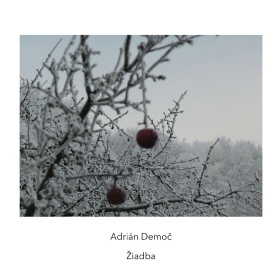
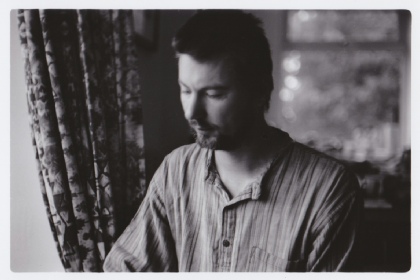
Photograph by Anton Lukoszevieze
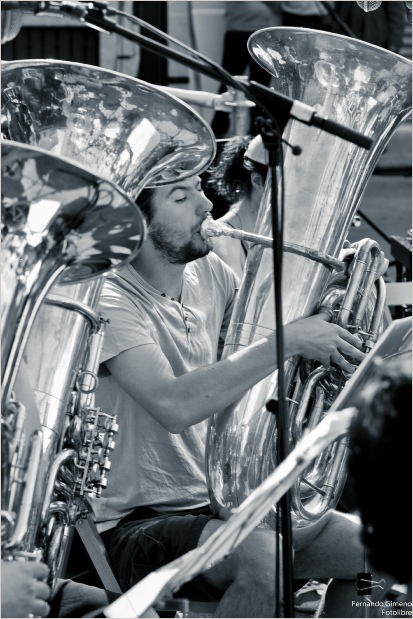
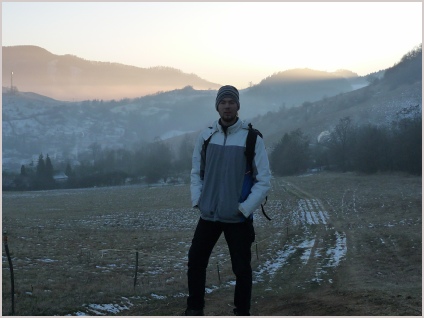
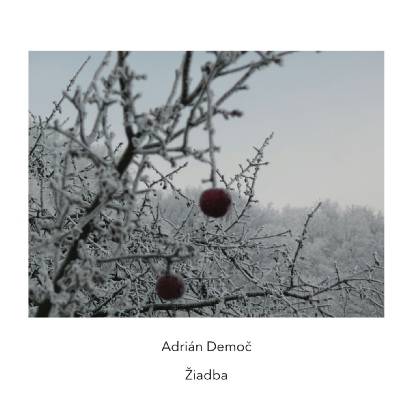
CD copies sold out, but you can still buy downloads from our Bandcamp page here